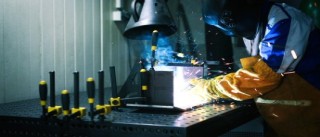TIG (Tungsten Inert Gas) and MAG (Metal Active Gas) welding are two popular welding techniques used to join metals together. While both methods involve the use of a filler material and a protective gas shield to produce a strong, high-quality weld, there are some key differences between TIG and MAG welding that set them apart. One of the main differences between TIG and MAG welding is the type of arc used to produce the weld. TIG welding uses a tungsten electrode to create a non-consumable arc, while MAG welding uses a consumable wire electrode that is fed through a welding gun. This means that with TIG welding, the tungsten electrode does not melt and become part of the weld, while with MAG welding, the wire electrode is consumed and becomes part of the weld.
Overall, both TIG and MAG welding are valuable tools for joining metals, and the best choice for a particular welding project will depend on the specific materials being welded, the desired level of precision, and the welder's skills and experience.
Another difference between TIG and MAG welding is the type of filler material used. TIG welding typically uses a separate filler rod made of the same material as the base metal, which is manually added to the weld pool. MAG welding, on the other hand, uses a consumable wire electrode that serves as both the filler material and the arc conductor. TIG welding is generally considered a more precise and skilled welding method, as it requires the welder to manually add the filler material and maintain a steady hand to






